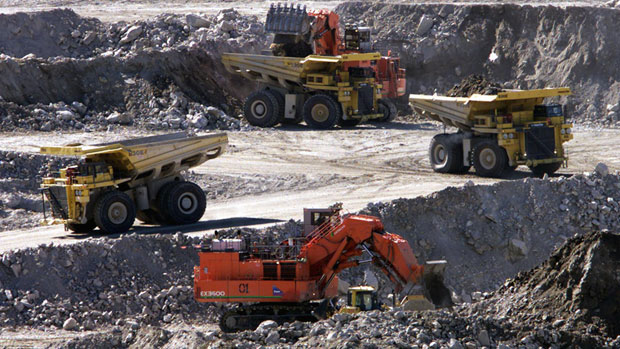Warnings have come from business and Indigenous leaders, from ordinary citizens and official institutions, from across the country and the political spectrum. Canada is at a turning point in its relationship with Indigenous peoples.
While the Harper government remains stubbornly in denial of Indigenous rights, committed to provoking confrontation and unable or unwilling to change, industry is becoming increasingly nervous about the threat that situation presents to natural resource development in Canada.
It is in this context — and with a nod to the 250th anniversary of the Royal Proclamation of 1763 — that the MacDonald-Laurier Institute (MLI) accepts a challenge “to think through how to make the natural resource economy work in the interests of all.”
As the first stage in a three-year project, MLI has released two papers this week, “New Beginnings: How Canada’s Natural Resource Wealth Could Re-shape Relations with Aboriginal People,” by Ken Coates and Brian Lee Crowley, and “Canada and the First Nations: Cooperation or Conflict?” by Douglas Bland.
Unfortunately, these papers do not meet the challenge set, inverting the question to one of how the relationship between Canada and Indigenous peoples can best serve the resource economy.
To its credit, the Coates and Crowley paper’s short history of Indigenous legal rights demonstrates a far better comprehension of the current resource development dynamic than the Harper government seems to possess.
On the other hand, the authors’ apparent faith in the beneficence of resource extraction companies, the decision not to examine the shortcomings inherent in impact and benefit agreements (IBAs), and the failure to truly examine the aspirations of Indigenous peoples are serious flaws in their paper.
The section on the agreement between DeBeers and the Attawapiskat First Nation is one such instance where the authors assume the good intentions of the mining company, eschew any responsibility of the Crown, and cannot explain why the IBA has failed the community. Coates and Crowley identify the benefits promised in the agreement, but are either unaware of, or chose to ignore, what happened afterward: the promised jobs that did not materialize; the flooding caused by sewage from the DeBeers mine that created an ongoing housing emergency; and the federal government’s continued reliance on the existence of this own-source revenue (which goes into a trust for future generations) to deny necessary community infrastructure improvements.
The problems with IBAs are many, all stemming from the fact that they are agreements between Indigenous governments and industry without the federal and provincial governments’ participation and are, therefore, incomplete. It is the responsibility of the Crown — not industry — to fulfil the legal duties of consultation and accommodation prior to any project being approved, meaning that an IBA by itself can never be a complete solution. Without federal and provincial government participation governance issues cannot be addressed, as industry simply does not have the jurisdiction to do so. This leaves communities frustrated when, for example, environmental problems arise. Nor do IBAs provide communities with the long-term financial stability and decision-making authority that comes from an equity stake in resource revenues.
More fundamentally, the paper does not give any serious attention to how resource development might actually serve any other, non-economic, interests of Indigenous communities. If the challenge is to look at how the resource economy can work in the interests of all, it is necessary to examine this question in far greater detail.
One hopes that future work on the project will address these failings because the Bland paper certainly does not.
The essential thesis of the Bland paper — that there is a real and credible risk of violent confrontation — is a conclusion shared by many, including myself. Unfortunately, the many flaws in the study undermine that important observation and make it too easy for those who disagree to write it off as fear mongering.
Bland argues for the adoption of “the feasibility hypothesis” which sets out five criteria one can examine in order to determine the likelihood of an insurrection occurring. He then sets out to show that these conditions exist. This might be fine if he simply concluded that the evidence shows that an insurrection is feasible and a confrontation is a possibility. But he doesn’t stop there.
Instead, he confuses a statistical correlation that helps predict the likelihood of a specific outcome occurring for a model of causation. This leads him to use the five criteria in his hypothesis as the basis for policy prescriptions, arguing that each must be confronted in order to reduce the likelihood of the outcome. This is a simple logical fallacy.
Among the many examples of this flawed logic at work is the section on “social fractionalization.” To reduce this indicator of feasibility, Bland argues for a resettlement program of First Nation citizens from reserves, which he claims would increase integration and reduce the likelihood of conflict. Yet steps in exactly that direction already undertaken by the federal government — the policy of assimilation — are among the major sources of anger and alienation. Following his prescription here would actually exacerbate the likelihood of conflict. His views are not only logically flawed; they are dangerous.
What neither paper addresses, is how the interest of Indigenous peoples in self-government, cultural continuity and continued attachment to the land could be assisted through natural resource development. They shed very little light on the fundamental issues still plaguing us 250 years after the Royal Proclamation declared British sovereignty over a portion of this land now called Canada.
If MLI’s project is truly about making “the natural resource economy work in the interests of all,” it must be hoped that future work will identify and explore what interests can be served through resource development and how any benefits accrued can be equitably shared by all.
Photo by Adrian Wyld/The Canadian Press



